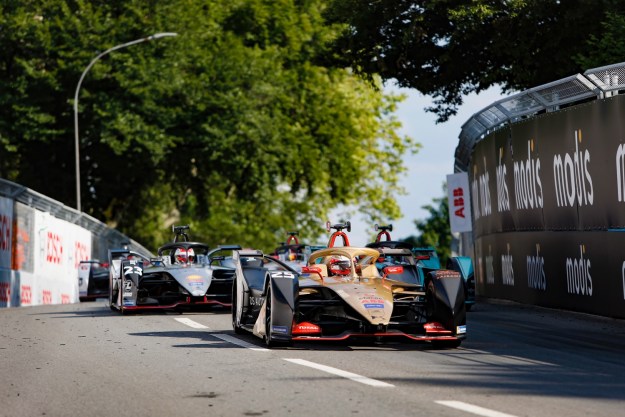Now that the Formula E electric-car race series has proven to be more than just a novel experiment, organizers are looking toward the future.
The FIA, which runs not just Formula E but also Formula One and the World Endurance Championship, among other series, just named Spark Racing Technologies as the supplier of the next generation of Formula E race cars. Spark supplies the current SRT_01e cars used by all teams since Formula E’s inception.
The next-generation car will enter competition in Formula E’s fifth season, which kicks off in 2018. Standardizing the car design is meant to put a cap on costs, and to focus development efforts on powertrains, which teams have much greater leeway to customize. This reinforces the narrative of Formula E as a test bed for future electric-car technology, something organizers believe is very important from a marketing perspective.
The new car will be called the SRT05e, and will look similar to the concept car pictured here. Some of the visual elements may change, but what won’t change is a requirement that the SRT05e complete an entire race on one charge. Current Formula E cars don’t have the range to run an entire race, so drivers swap cars during a pit stop. To help stretch range, the SRT05e will accommodate a larger battery pack with a capacity of 54 kilowatt-hours, compared to 28kWh for current-gen cars.
One challenge facing Spark engineers is how to deal with the anticipated 10 percent weight increase of the larger pack. Another is driver safety: The SRT05e concept features a windshield, a nod toward efforts to provide greater head protection to drivers of open-topped race cars. The concept car also features a much sleeker design than the current Formula E racer, with fully enclosed wheels and no large rear spoiler.
Formula E is steadily gaining traction. Manufacturers currently participating in the series include Renault, Audi, Jaguar, Mahindra, and Citroën’s DS sub-brand, as well as startups NextEV and Faraday Future. BMW and Mercedes-Benz have taken options to enter the series at a future date, while Audi has said it will expand its presence significantly.
Editors' Recommendations
- Mercedes’ electric eSprinter isn’t just greener, it’s better
- Lamborghini is putting race cars in your living room. Hop in and drive one
- Formula E team rolls with marble racing during pandemic postponement
- Why Tesla’s promise to deliver 500,000 electric cars in 2020 isn’t unrealistic
- Lucid Air beta prototype shows 1,000-hp, 400-mile, electric car isn’t dead yet


